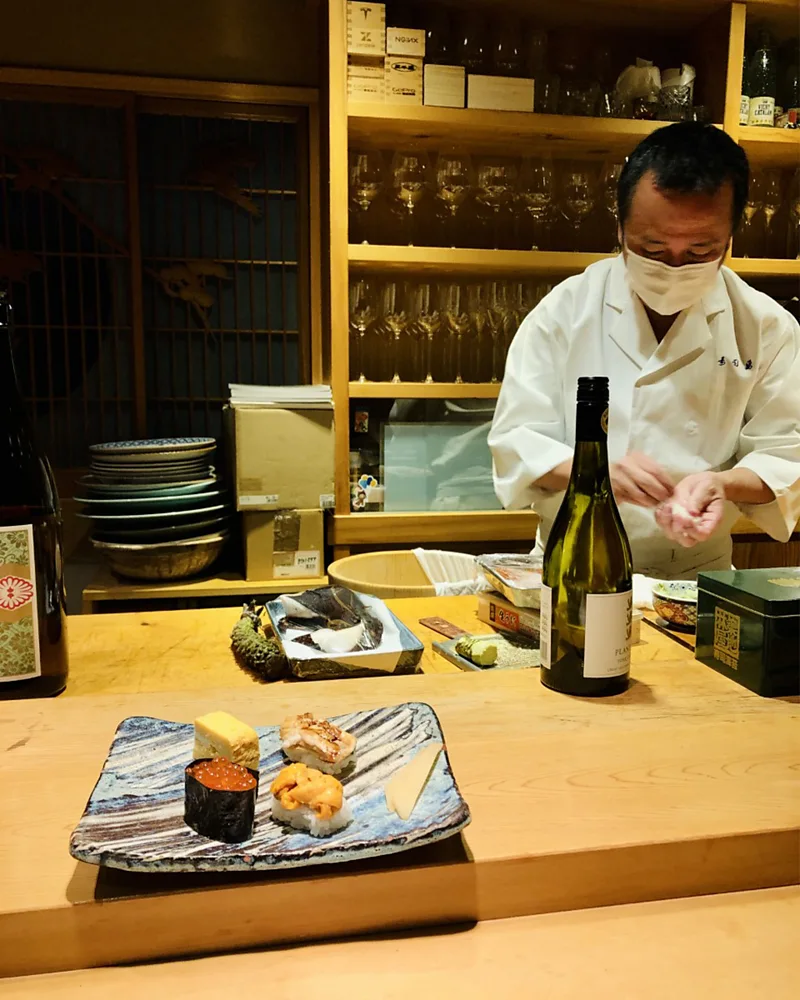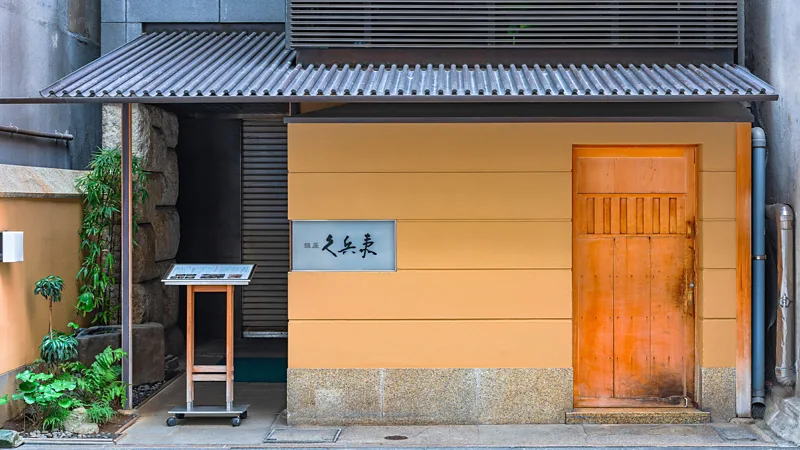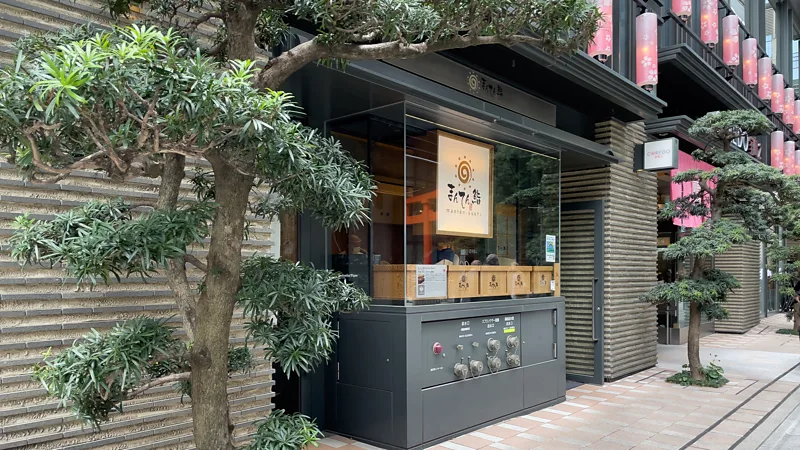An insider's guide to the best sushi in Tokyo
 Yukari Sakamoto, an expert in sushi, offers her recommendations for the top five sushi spots in Tokyo. While sushi may seem straightforward—a blend of seafood and rice—it embodies Japan's rich culture with its complexity, detail, and deep-rooted history.
Yukari Sakamoto, an expert in sushi, offers her recommendations for the top five sushi spots in Tokyo. While sushi may seem straightforward—a blend of seafood and rice—it embodies Japan's rich culture with its complexity, detail, and deep-rooted history.
The most familiar form of sushi, known as nigirizushi or "hand-pressed sushi," originated in the 1800s, marking a relatively recent development. However, sushi's roots trace back over 1,000 years to narezushi, where rice and seafood were fermented together, with diners consuming only the preserved fish after discarding the rice.
Today, sushi spans a wide spectrum of experiences and prices in Tokyo. It can range from affordable options at lively kaitenzushi (conveyor belt) establishments to extravagant dining experiences at exclusive sushiya (sushi restaurants) where prices can reach tens of thousands of yen. Beyond the traditional nigiri, Tokyo offers a plethora of sushi variations, including pressed oshizushi and rolled makizushi, waiting to be explored.
With extensive experience in exploring Tokyo's vibrant sushi scene through her book "Food Sake Tokyo" and corresponding blog, Yukari Sakamoto is unparalleled in her knowledge of the city's culinary landscape. Having reviewed numerous sushi establishments and led food tours, we turned to her expertise to reveal some of the finest spots to indulge in sushi across Tokyo.
1. Best for omakase sushi: Sushi Yuu
 In Tokyo's upscale sushi scene, language barriers and an air of intimidation can deter newcomers. However, Sushi Yuu, nestled in the quiet streets of Roppongi, offers a welcoming and laid-back atmosphere. Led by Chef Daisuke Shimazaki, who speaks English, this counter-only sushiya provides an accessible experience.
In Tokyo's upscale sushi scene, language barriers and an air of intimidation can deter newcomers. However, Sushi Yuu, nestled in the quiet streets of Roppongi, offers a welcoming and laid-back atmosphere. Led by Chef Daisuke Shimazaki, who speaks English, this counter-only sushiya provides an accessible experience.
Originally founded by Shimazaki's late father, Shojiro, in Kameari in 1972, Sushi Yuu later moved to Roppongi in the late 1970s and settled into its current location in 2010. The 11-seat hinoki-cypress counter, adorned with a photo of Shojiro, sets the stage for Shimazaki's omakase-style service, where diners entrust him to select each course based on the freshest seasonal ingredients sourced daily from Toyosu Market.
While all courses are omakase, Yukari Sakamoto highlights maguro (tuna) as a standout, featuring prized cuts like the luxurious o-toro and the more robust akami. Noteworthy is Shimazaki's meticulous attention to detail, such as adjusting the amount of wasabi as the tuna becomes fattier, enhancing flavor balance.
Address: 1-4-15 Nishi Azabu, Minato-ku, Tokyo 106-0031
Phone: +81 30 3403 6467
Website: http://sushiyuu.com/
2. Best for accessible high-end sushi: Ginza Kyubey
 In the prestigious Ginza district, renowned for its upscale sushiya, Kyubey stands out as a legendary establishment. Opened in 1935 and still operated by the same family, it offers an exclusive yet accessible experience for travelers. Unlike many high-end sushiya, Kyubey boasts an unusual scale with five floors, featuring intimate counter spaces, table seating, private rooms, and even an annex across the road, along with branches in major hotels.
In the prestigious Ginza district, renowned for its upscale sushiya, Kyubey stands out as a legendary establishment. Opened in 1935 and still operated by the same family, it offers an exclusive yet accessible experience for travelers. Unlike many high-end sushiya, Kyubey boasts an unusual scale with five floors, featuring intimate counter spaces, table seating, private rooms, and even an annex across the road, along with branches in major hotels.
Yukari Sakamoto notes that Kyubey's staff are accustomed to serving non-Japanese guests, making it a welcoming choice. She recommends their lunchtime taster courses as a more budget-friendly entry point to this realm of sushi. At Kyubey, chefs craft fixed courses centered around nigirizushi, complemented by gunkanmaki, or "battleship roll," a creation pioneered by the first-generation owner, Hisaji Imada, in 1941.
This innovation involves wrapping rice with dried seaweed to hold delicate toppings like salmon roe (ikura) and sea urchin (uni), preventing them from slipping off the nigiri.
Address: 8-7-6 Ginza, Chuo-ku, Tokyo 104-0061
Phone: +81 3 3571 6523
Website: http://www.kyubey.jp/en
3. Best for budget sushi: Sushiro
The fact that one of Japan's largest budget sushi chains is worthy of recommendation speaks volumes about Tokyo's dining scene. Yukari Sakamoto highlights the Sushiro branch in the Yaesu underground mall at Tokyo Station as exemplary. This branch, one of 60 in Tokyo and 639 nationwide, offers the quintessential kaitenzushi conveyor belt sushi experience: lively, enjoyable, family-friendly, affordable, and above all, delicious.
At Sushiro, there's no need to worry about formalities or language barriers. Diners simply pick color-coded dishes from the conveyor belt or use the multi-lingual touch screen to order directly from the kitchen, which arrives on a separate belt. With orange plates priced at 150 yen (£0.78) offering options like squid and salmon nigiri, red plates at 210 yen (£1.09) featuring sea bream nigiri and various gunkanmaki, and black plates at 390 yen (£2.02) for premium tuna nigiri, there's something for every budget.
Sakamoto notes that Sushiro caters well to families and selective eaters with its diverse menu, including vegetarian nigiri, maki rolls, and side dishes like noodles, fries, and fried chicken. While some combinations might surprise sushi traditionalists—think prosciutto and mozzarella nigiri—Sushiro offers an authentic Tokyo sushi experience in its own right.
Address: 2-1 Yaesu, Chuo-ku, Tokyo 104-0028
Phone: +81 3516 31870
Website: https://www.akindo-sushiro.biz/en/
4. Best for carry-out sushi: Mitsukoshi
In the basement of Japan's oldest department store, alongside a vibrant array of deli counters, you'll discover a variety of sushi styles available for takeout. Yukari Sakamoto particularly recommends Shinodazushi, whose main shop in nearby Kanda has been serving since 1877. Specializing in inarizushi (tofu pockets filled with vinegared sushi rice) and makizushi (thin rolls with nori seaweed wrapped around rice and fillings like pickles and cucumber), Shinodazushi stands out for also offering the less common oshizushi. Here, toppings such as mackerel and salmon are pressed tightly onto vinegared rice in a wooden box.
Adjacent to Shinodazushi, Gozaemonzushi offers a unique take on oshizushi, with Sakamoto suggesting the mackerel pressed onto rice with sesame seeds and wrapped in kombu kelp. Additionally, you'll find traditional nigiri sets and variations like chirashizushi, featuring assorted chopped sushi toppings scattered over rice. Even for browsing, the stalls showcase the incredible sushi variety available in Tokyo.
After exploring the stalls, Sakamoto recommends taking your takeaway sushi to the tranquil rooftop garden at Mitsukoshi department store.
Address: 1-4-1 Nihonbashi Muromachi, Chuo-ku, Tokyo 103-8001
Phone: +81 3 3241 3311
Website: https://www.mistore.jp.e.az.hp.transer.com/store/nihombashi.html
5. Best for value: Manten Sushi
 Situated within the upscale Coredo Muromachi complex in Nihonbashi, Manten Sushi stands out as a unique dining option. Unlike many mid- to high-end sushi establishments that typically close on Sundays, Manten Sushi opens its doors, offering highly acclaimed omakase-only courses at surprisingly affordable prices: 3,500 yen (£18.15) for lunch and 7,000 yen (£36.95) for dinner. This is a significant contrast to the staggering prices at renowned sushi restaurants like Jiro in Ginza, where a meal can cost up to 55,000 yen (£285).
Situated within the upscale Coredo Muromachi complex in Nihonbashi, Manten Sushi stands out as a unique dining option. Unlike many mid- to high-end sushi establishments that typically close on Sundays, Manten Sushi opens its doors, offering highly acclaimed omakase-only courses at surprisingly affordable prices: 3,500 yen (£18.15) for lunch and 7,000 yen (£36.95) for dinner. This is a significant contrast to the staggering prices at renowned sushi restaurants like Jiro in Ginza, where a meal can cost up to 55,000 yen (£285).
The allure of Manten Sushi lies in the element of surprise that comes with omakase dining, allowing chefs to showcase the freshest seasonal produce and daily market finds. Yukari Sakamoto highlights that patrons never know exactly what to expect as dishes are served over the wooden counter. It might begin with a flavorful clam soup to awaken the palate, followed by expertly prepared nigiri brushed with just the right amount of soy sauce. Occasionally, diners may even enjoy non-seafood surprises like nigiri topped with chewy enoki mushrooms or various shellfish.
Given the popularity of Manten Sushi, reservations are highly recommended. Alternatively, Sakamoto suggests exploring their other branches nearby in Hibiya and Marunouchi.
Address: 2-3-1 Nihonbashi Muromachi, Chuo-ku, Tokyo 103-0027
Phone: +81 3 3277 6045
Website: https://www.manten-sushi.com/























